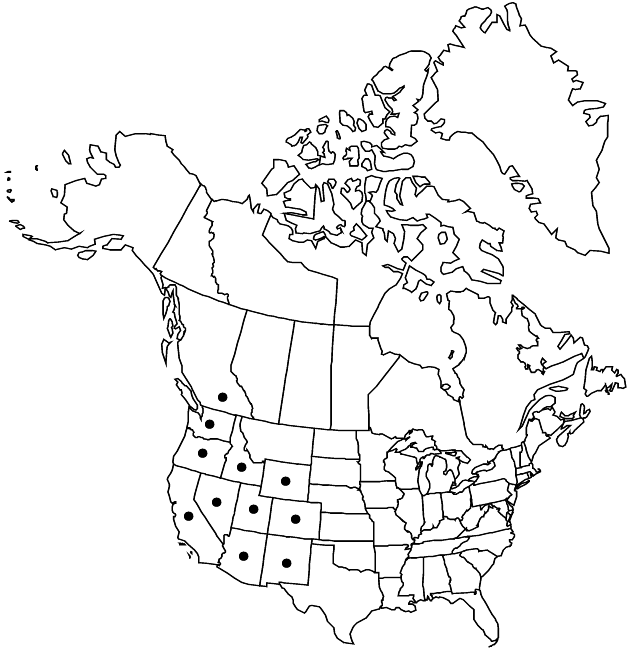Symphyotrichum frondosum
Phytologia 77: 282. 1995.
Annuals or sometimes perennials, 5–140 cm. Stems 1–6+, decumbent to erect (straight), glabrous. Leaves thin, margins entire (basal sometimes serrulate), sometimes ciliate or remotely scabrous, acute to ± obtuse, faces glabrous; basal withering by flowering, petiolate, blades oblanceolate to spatulate, 20–115 × 2–15 mm [cult.], bases attenuate; proximal cauline withering by flowering; cauline subpetiolate or sessile (distal), blades oblanceolate to linear, 10–80 × 1.5–10 mm, reduced distally, bases cuneate. Heads (radiate) in narrow, paniculiform to spiciform arrays, branches often in axils of nearly every leaf, ascending. Peduncles glabrous, bracts linear. Involucres narrowly campanulate, 5–9 mm. Phyllaries in 3–4 series, ± spreading, oblong-oblanceolate or lanceolate to obovate, subequal to ± unequal, linear-lanceolate or linear (innermost), bases scarious, margins narrowly scarious, hyaline, erose, ciliolate, green zones (outer) foliaceous, (inner) lanceolate, apices obtuse to rounded, inner acute, mucronulate, faces glabrous. Ray-florets 90–110 in 4–5+ series; corollas pink to pinkish white, laminae 1.5–2 × 0.1–0.2 mm (surpassing style-branches, barely surpassing disc corollas; tubes ± 3 mm). Disc-florets ± 37; corollas yellow, 4.4–5.2 mm, barely ampliate, tubes much longer than cylindric limbs, lobes lanceolate, ± 0.3 mm. Cypselae tan, obovoid, ± compressed, 2 mm, 2–3-nerved, faces strigillose; pappi white to yellowish, 6.3–7.5 mm. 2n = 14.
Phenology: Flowering Aug–Oct.
Habitat: Moist, usually saline soils, summer-receding shores of lakes or ponds, vernally moist, alkaline bottoms, marshes, often in steppes
Elevation: 10–2200 m
Distribution

B.C., Ariz., Calif., Colo., Idaho, Nev., N.Mex., Oreg., Utah, Wash., Wyo., Mexico (Baja California)
Discussion
Selected References
None.
Lower Taxa
"thin" is not a number.